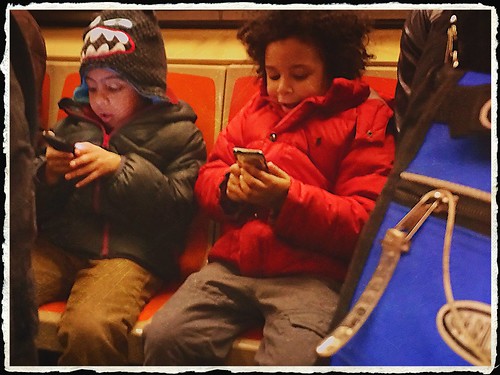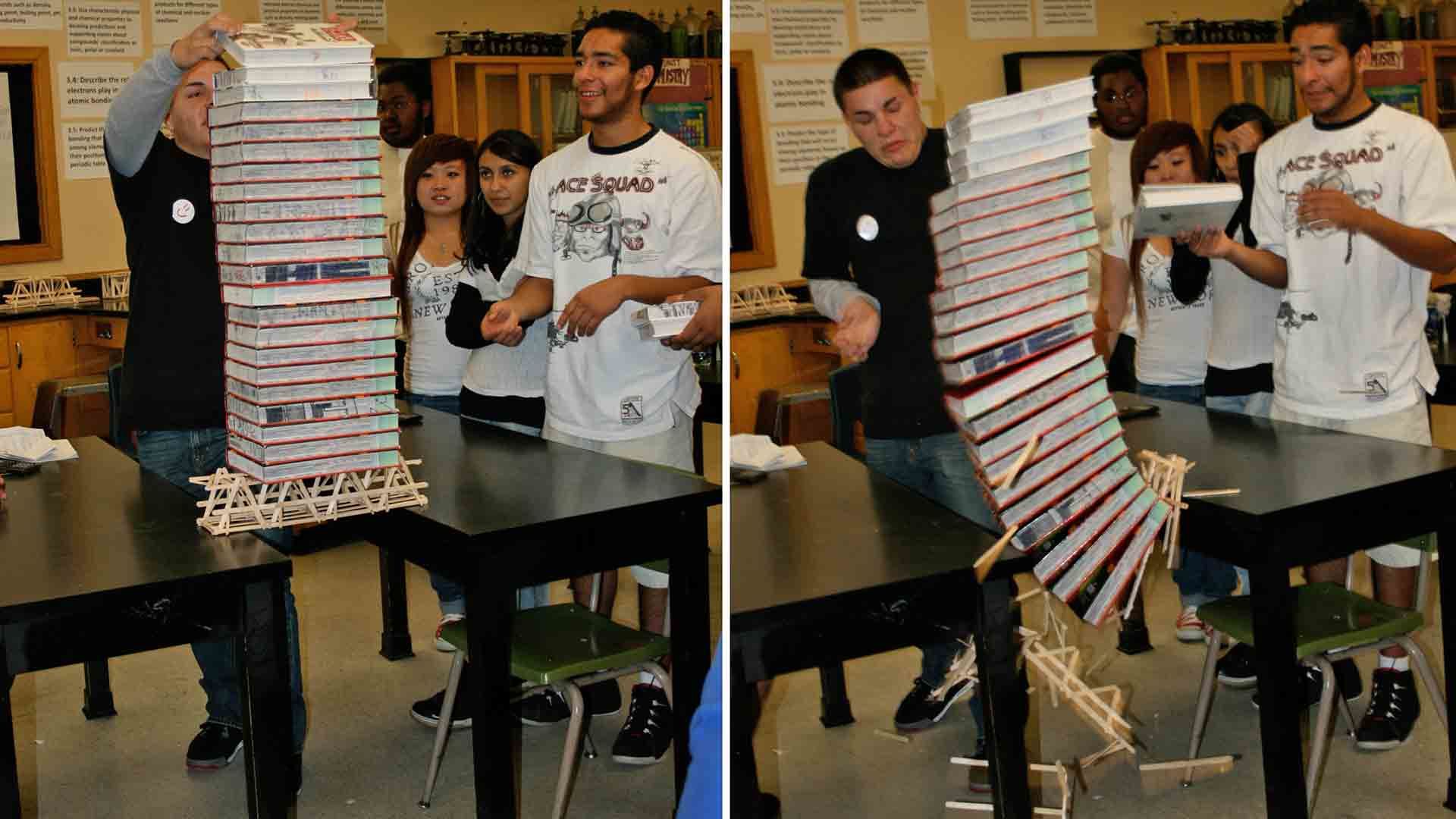In the
first pages of Being Wrong,
Kathryn Schulz writes, “In our collective imagination, error is associated not
just with shame and stupidity but also with ignorance, indolence,
psychopathology, and moral degeneracy.” This cultural terror of messing up,
combined with modern modes of parenting and schooling obsessed with narrow
versions of academic and career “success,” are making students more than
risk-averse.
Books
like How to Raise an
Adult and Teach Your
Children Well say kids are coming to college
“underconstructed,” at best unsure of who they are and where they fit, at worst
anxious and depressed, because their parents have protected them from the
uncomfortable and unacceptable state of being wrong. Focused on getting the
grades or winning the game and excused from helping out around the house, these
children have internalized the pressure, and it’s morphed into a monster that
paralyzes kids in their ability to take risks, screw up, find out the
consequences and learn from their mistakes.
Parent
and educator Jessica Lahey, author of the new book The Gift of
Failure, wants parents (and teachers) to back off. She said it’s
time for adults to do the responsible thing and let the children fail. Trying
something and failing, she writes, is how children learn and make discoveries
about themselves and the world around them. This applies to unloading the
dishwasher as well as the science fair. Becoming autonomous gives children
pride in themselves and their abilities, and makes them independent thinkers
and doers who can cope with the ups and downs of life.
Stop
bringing forgotten homework to school, Lahey tells the parents of her students.
But it
will be messy, and adults should expect as much. To Lahey’s credit, The
Gift of Failure defiantly rejects the binary choices of either“triumphant or
bumbling adulthood”as end goals, and sees growing up as a series of
peaks and valleys with lots of time to figure things out in between. Instead,
she offers practical advice, steeped in the latest research, on how to let kids
find their own way as parents and teachers guide them, the key word being guide —
not instruct, dictate, or enable. Giving kids autonomy may or may not make
them a big “success,” but the research supports that it will make kids happier,
less anxious and depressed, and more fulfilled to work towards agency in their
own lives.
Lahey
taught middle school for more than a dozen years, and said that in that period
of time, she watched as kids went from cautious to take risks to too terrified
to even make a move — write a sentence, for example — without considering
what people might think or how it would affect their grade.
“The
thing I began to notice was not the fear of an ‘F’, it was the fear of any
mistake,” she said. “It’s not that students couldn’t get to a final draft, they
couldn’t get even their ideas down. From a teacher’s point of view, that’s a
nightmare! If they can’t take a risk, then certainly they aren’t raising their
hand with an I-wanna-try-this-idea-out kind of thing.”
Many
educators already know this, but what to do about it? Educators can play a
crucial part in helping kids to get comfortable with failure, which Lahey calls
“autonomy-supportive teaching” and goes hand-in-hand with “autonomy-supportive
parenting.” She says there are ways educators can encourage parents to let go,
and here are a few:
Encourage
parents to think of raising a child as a long-haul job
Stop
bringing forgotten homework to school, Lahey tells the parents of her students.
And stop stressing over how your daughter will do on next week’s quiz: instead,
focus on what your daughter can learn if she does it all herself, without
nagging and pestering and pressure. If she does indeed fail the quiz, she may
be forced to ask herself what went wrong, and what she could do better next
time. Parenting is a long-haul job, Lahey says, and parents and teachers need
to think more about what’s going to make kids happy in the long term. In the
case of the quiz, the short-term goal is getting an ‘A,’ but the long-term goal
of self-sufficiency eclipses that minor ‘A’ by a long shot.
“It’s
so freeing!” she said. “You can stop worrying about the stupid details of the
moment-to-moment junk, and start focusing on the big things. Just think about
where your kid was one year ago today. They’re amazing!” Lahey said she’s not
sure if adults just forget, or worry that’s not true. She suspects, though,
that parents don’t see the amazing growth in kids because they aren’t given the
opportunity to show it very often.
Focus
on Process Instead of Product
Lahey
confesses this is a tricky balance, especially since schools today are
inherently — almost obsessively — focused on product (and may inadvertently be
contributing to parents’ anxieties over academic success). But there are ways
to get around that, she says.
Adjust
expectations (and grades) to make room for real student work. In the book,
Lahey asks a kindergarten teacher what her kids can do that their parents don’t
think they can. She responds: “Everything!” In autonomy-supportive teaching,
work that students plan and orchestrate themselves will look like — well, like
a kid did it. That means no more science projects worthy of their own Nobel.
“Teachers need to move their expectations as well. Our lines for where grades
should be have creeped up anyway, based on our expectations for what the
product should look like. Our expectations have been skewed by the work of the
parents.”
Lahey
knows that teachers love to hear that a parent has decided to make the child
more responsible for his own learning: “If you tell your teacher you’re making
the move to more autonomy-supportive parenting, and to please hold your child
to consequences without letting the kid off the hook? If you ask the teacher to
help you through this — that this is the only way your child is going to learn?
Just knowing when a parent is interested in supporting a student’s voice and
ability to speak up for themselves: a teacher will kiss you on the lips for
that!”
Back
away from the parent portal
One of
the biggest pitfalls to autonomy-supportive parenting, Lahey says, are the
parent portal websites, with access to up-to-the-minute feedback about
scores and grades. Lahey and her husband decided to forgo the parent portal for
their older child. They handed the password over to their son, telling him he’d
need to let them know if he was in academic trouble. Some of her friends were
shocked, “as if we were defaulting on our parental duty,” she writes. “I
disagree. Checking in on children’s grades is a type of surveillance, which is
one of the forms of control and is often mentioned in the research as an enemy
of autonomy and intrinsic motivation.”
For
parents who decide to forego the parent portal (or only check it occasionally),
Lahey recommends sending a note to teachers about the decision, explaining that
your student is now responsible for her own communication information.
Consider
the Fear of Failure May Affect More Kids Than You Think
Some
educators have called out the rash of overparenting books as only written for a
few upper-class parents; some have called The Overstressed American Child “a myth.” Many
students are well-acquainted with failure, both their own personal shortcomings
as well as the systemic failures of their schools and homes. While Lahey openly
admits that The Gift of Failure doesn’t apply to everyone, she
cautions that it’s not just the 1% who are terrified of their kids failing:
“What I did find out by talking to teachers, is that it’s far more pervasive
than we thought,” Lahey said. “We’re talking about a big chunk, a lot of middle
class kids are getting the same kind of pressure,” as kids at the top. Many
times, she said, the pressure’s even greater if a family doesn’t have the means
to pay for college — especially when it comes to sports and scholarships.
Fear of
failure destroys the love of learning
In
chapter 2, Lahey relates the story of one of her students, capable and
intelligent Marianna, who has “sacrificed her natural curiosity and and love of
learning at the altar of achievement, and it’s our fault.”
We
taught her that her potential is tied to her intellect, and her intellect is
more important than her character. We taught her to protect her academic and
extracurricular perfection at all costs and that it’s better to quit when
things get challenging rather than risk marring that perfection.
Above
all else, we have taught her to fear failure, and that fear has destroyed her
love of learning.
And
this is the real shame: fear of failure taints the waters of learning, keeping
kids from taking risks. Making failure normal — even celebrated — Lahey
contends, may be uncomfortable in the short-term, but in the long haul makes
for happier, more confident kids.





